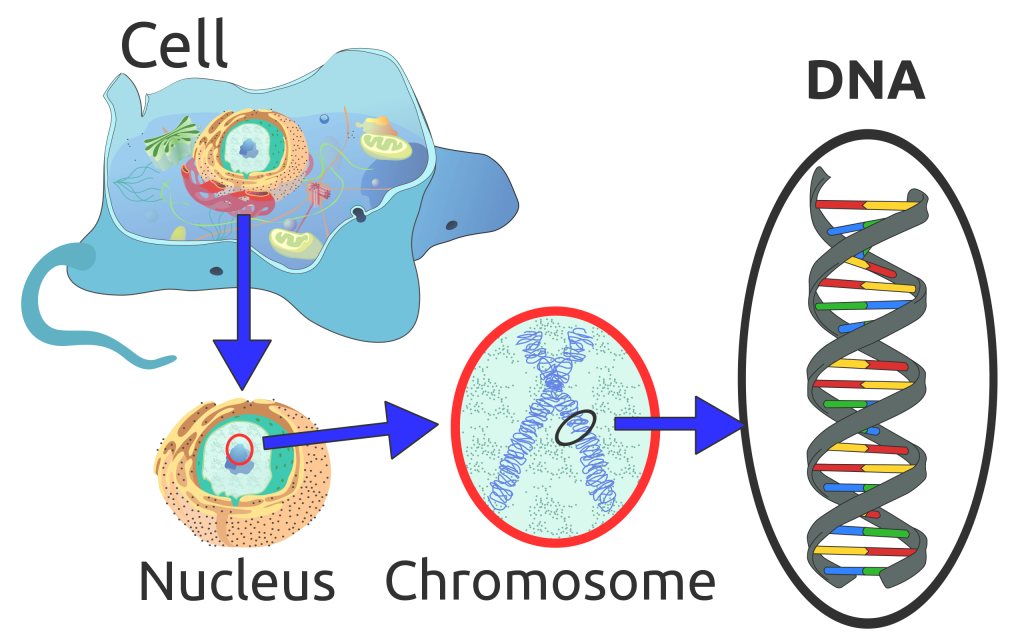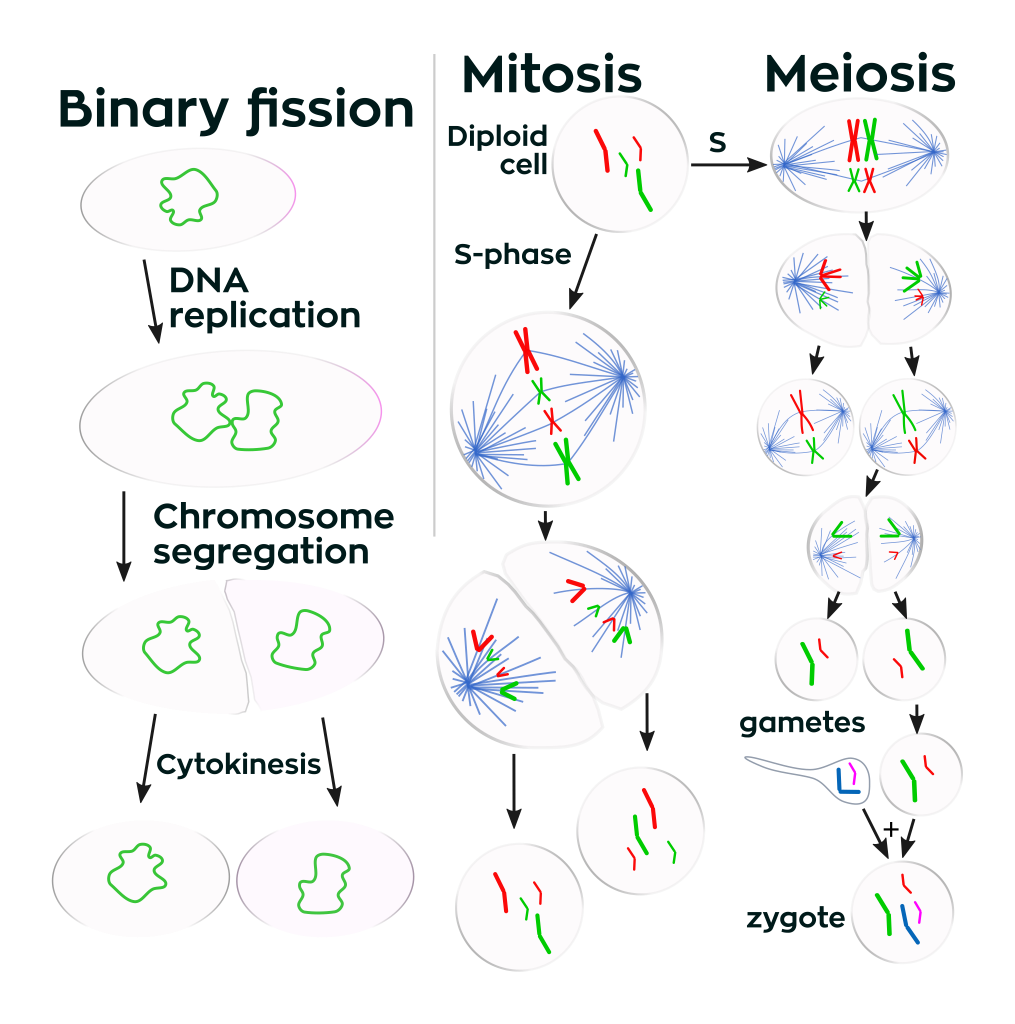
Normal human cells contain forty-six chromosomes (or twenty-three pairs; one from each parent) in the nucleus of the cells. After conception, most cells of the body are created by a process called mitosis. Mitosis is defined as the cell’s nucleus making an exact copy of all the chromosomes and splitting into two new cells. However, the cells used in sexual reproduction, called the gametes (sperm or ova), are formed in a process called meiosis. In meiosis the gamete’s chromosomes duplicate and then divide twice, resulting in four cells containing only half the genetic material of the original gamete. Thus, each sperm and egg possesses only twenty-three chromosomes and combine to produce the normal forty-six. See Figure 2.2 for details on both mitosis and meiosis. Given the amount of genes present and the unpredictability of the meiosis process, the likelihood of having offspring that are genetically identical (and not twins) is one in trillions (Gould and Keeton, 1997).

Of the twenty-three pairs of chromosomes created at conception, twenty-two pairs are similar in length. These are called autosomes. The remaining pair – sex chromosomes – may differ in length. If a child receives the combination of XY the child will be genetically male. If the child receives the combination XX the child will be genetically female.

